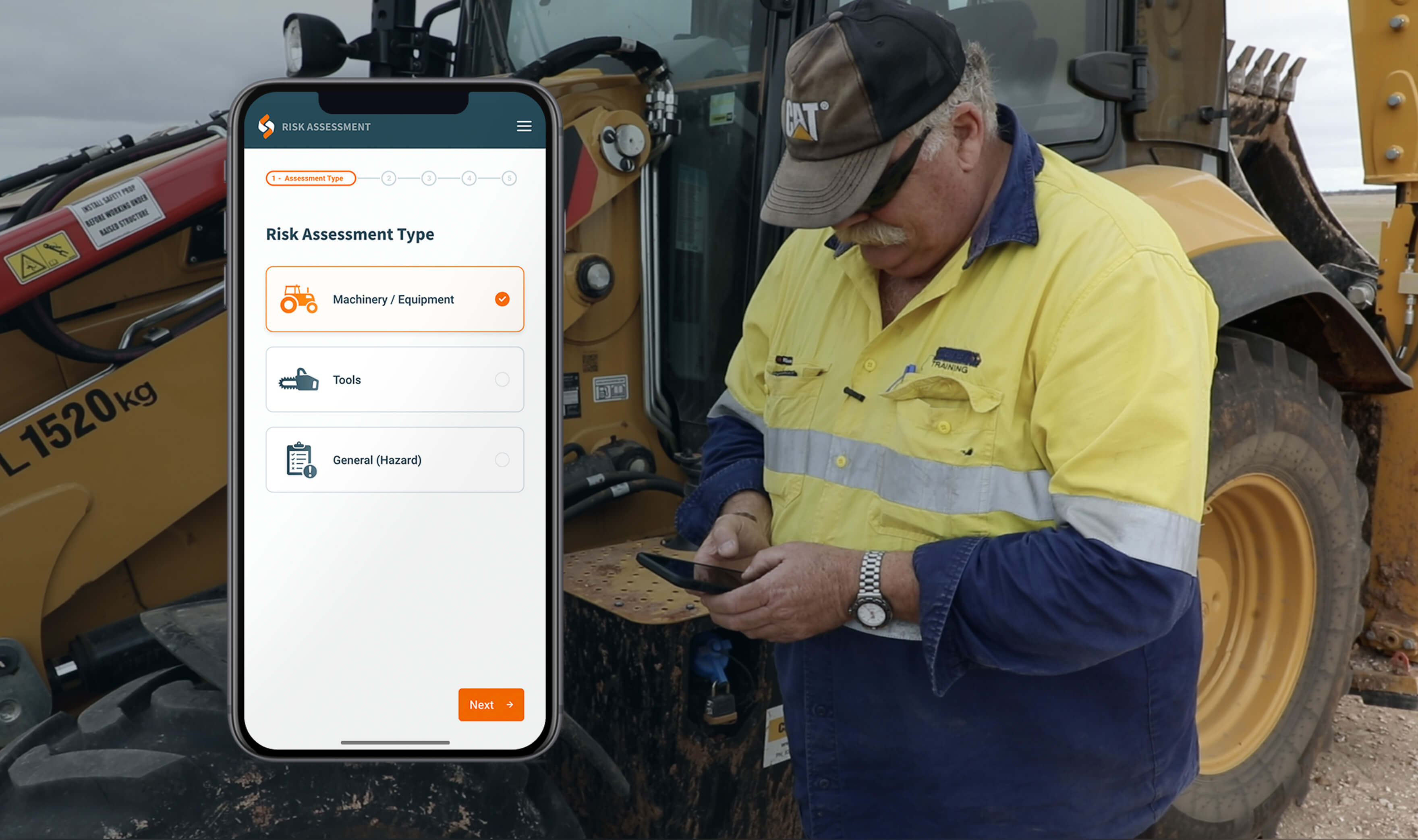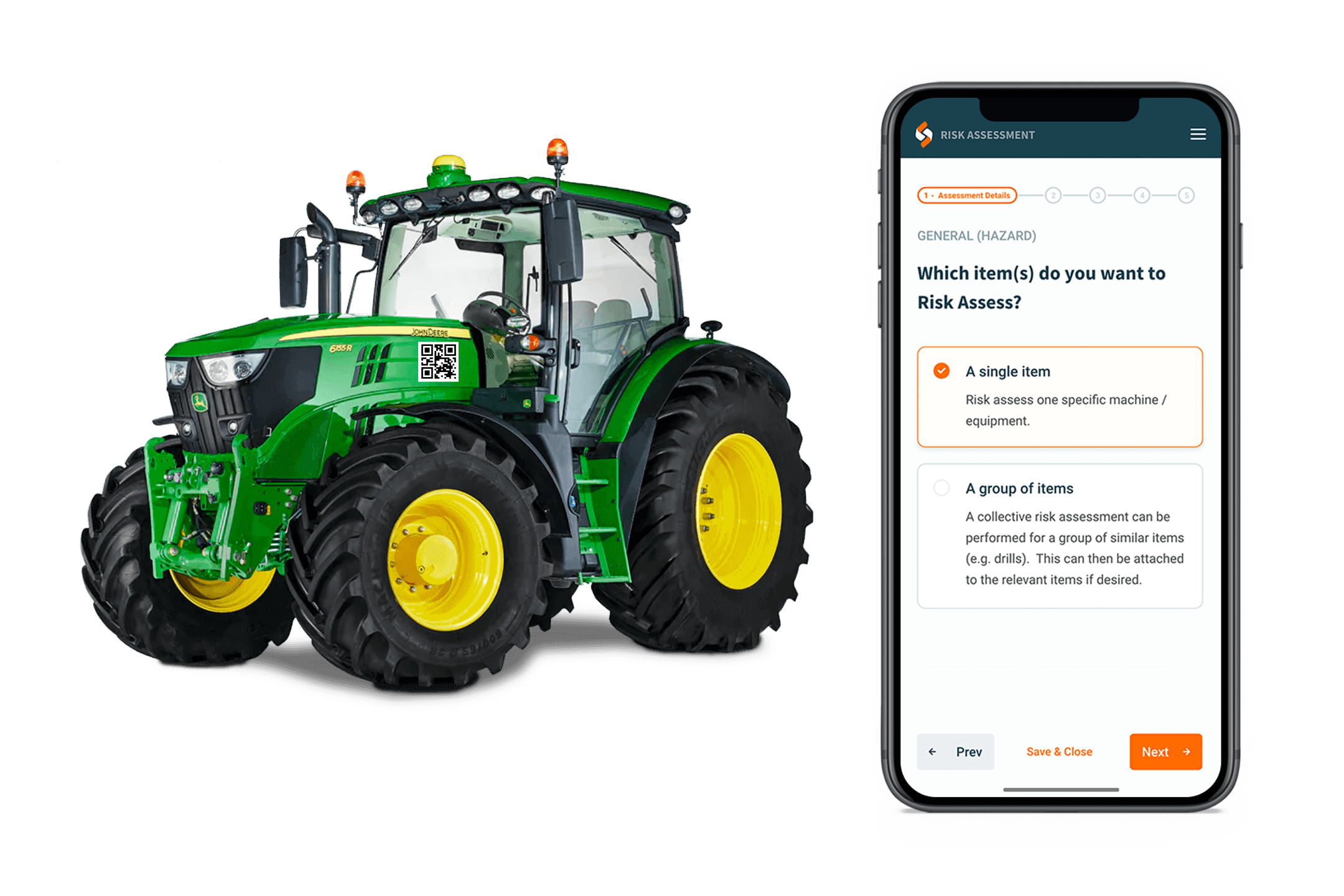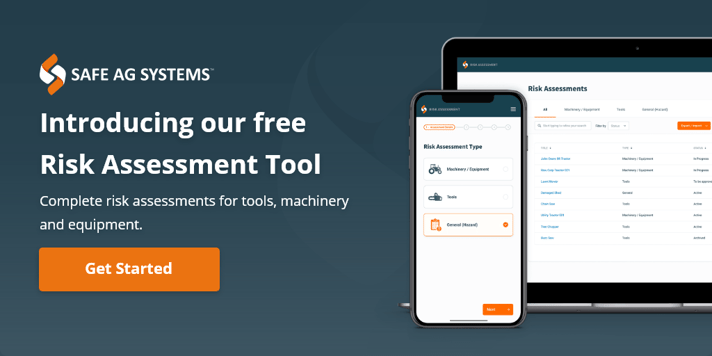Streamline hazard identification with our free risk assessment template.
In farming we know there are a lot of risks every day due to various tasks including working with chemicals, handling livestock, confined spaces, access to machinery and equipment, the environment, heights and so much more. Making your farm a safer workplace can require a proactive approach and risk assessments could be the perfect tool in your kit to help get the job done.
What is a risk assessment?
As part of your risk management process, you will need to assess the risks in the workplace. This can be done through regular walks around your property, workers on the ground, or hiring a professional to assist. A risk assessment allows you to systematically identify hazards, evaluate the risks and implement control measures which remove or reduce the risk. As mentioned above these risks could be associated with machinery and equipment, the job itself, or environmental factors like noise or temperature.
What is risk assessment matrix
When a risk is being assessed, it should be done based on a likelihood vs impact matrix. This is also known as a Risk Assessment Matrix. The likelihood and impact help a business decide where they focus their attention first as well as how quickly they need to address the risk.

Why perform a health and safety risk assessment for agriculture?
Whilst risks cannot always be eliminated, a risk assessment is a step closer to ensuring you are protecting your workers, family, and anyone else on farm as far as reasonably practicable. The purpose of a risk assessment is to find safer ways of doing something. The role of a risk assessment within the risk management process should be to establish the severity of the risk, determine if the current control measures are effective, confirm if any other actions need to be taken to reduce the risk and the sense of urgency for those actions.
For agribusinesses that do not have control measures in place, it can become a costly lesson. Failing to control a risk cannot not only result in fines and prosecution, but it can also impact production time, resulting in damage to machinery, tools and equipment as well as a damaged reputation. And that’s on top of the human factors of something going wrong. At the beginning it can seem time consuming to do risk assessments, but time invested upfront will have a positive effect on reducing the change of incidents in the workplace in the future.
How to do a health and safety risk assessment
A risk assessment should always be completed before someone starts a particular task, and for any new activity or task. A risk assessment is not a set and forget notion. They should be reviewed based on a number of contributing factors with the frequency determined by the level of risk involved. If you have introduced any changes to an activity or task, your assessment may no longer be valid. You will also need to review a risk assessment following any incidents or injuries that occur on farm.
The team at Safe Ag Systems suggests tackling Risk Assessments on farm with four steps.
- Identify the hazards in your workplace.
- Determine what harm the hazard could cause and who in your workplace is at risk?
- Evaluate, assess and/or implement controls. Define the inherent risks using likelihood and consequence and then reassess once you have implemented your controls to determine your residual risk.
- Record, review and update
Inherent risk is the level of risk with no new controls in place to mitigate harm. It factors in any existing controls. Residual risk is the level of risk remaining with existing and/or new controls in place.
It is a business’ responsibility to ensure risk assessments are completed. They can either take on the responsibility within the business or employ a health and safety consultant to act on their behalf. There is a now a way to easily do risk assessments with Safe Ag Systems, whether you are a business or a consultant.

How do you perform a free health and safety risk assessment with Safe Ag Systems?
Find out how Safe Ag Systems can help you manage your health and safety risk assessments without losing paperwork and simplify record keeping. Our free online tool guides you through risk assessments across three main areas: machinery and equipment, tools and general risk assessments.
Where to start
Using your mobile, tablet or desktop, access the Safe Ag Systems free online risk assessment tool as either a guest user or create an account. By creating an account, you can save and revisit your current Risk Assessments. Choose the type of risk assessment you want to do.
Hazard identification
Once you have started your Risk Assessment, you’ll need to detail the hazard. This could be an activity, task or product, and note the location. As part of your assessment, you can include imagery to provide more context to your team. Your images also assist your record keeping practices and can act as evidence.
Determine
To ascertain the potential harm this hazard could cause and the risks that are present, you will be prompted to answer a short series of questions to evaluate the dangers present. As part of defining the harm, you will also need to identify who will be at risk if exposed to the hazard.
Evaluate, assess and implement controls
In a strong risk assessment process, or hazard identification procedure, you will need to evaluate the controls you currently have in place to address the identified hazard. Within the Safe Ag Systems risk assessment, your identified hazards will be allocated an inherent risk rating instantly based on likelihood and consequences of the risk. You will then need to determine and assess corrective actions and implement further control measures such as elimination, substitutions, or engineering options. From here, the risk assessment will require you to re-evaluate your risk based on the implemented controls to create your residual risk. Note your residual risk should always be lower (or maybe the same) than your inherent risk as you’ve implemented controls to improve safety.
Record, review and update
When finalised, send your completed risk assessment template for approval via email. Your report should be kept on file for reference and to check that the controls identified are implemented and effective. If you have created an account for your Safe Ag Systems hazard identification and risk assessment tool you will be able to revisit your reports at any time.
Topics: Risk Assessments
Disclaimer: Content on this website may be of relevance to users outside of Australia, but content links and examples are specific to Australia. Please check with your local authority for your country and industry requirements.












